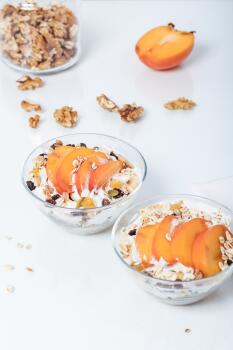
Sports Nutrition Tip of the Month: Recovery Nutrition Tips in a Nutshell
 Let’s start with the basics. A solid plan for recovery nutrition will allow you to refuel your muscles and cells, and ensure you are prepared for your next workout or competition. In general, recovery nutrition will depend upon a couple of factors: type of training session, training volume, training intensity, timing of your next training session, body weight, and whether you are training or competing. As you might imagine, there are some times when your nutrition will play a large role in your recovery and there are other times, not so much. Your recovery nutrition should be focused on: replenishing glycogen by eating carbs, repairing and regenerating muscle by eating protein, supporting other hard hit body systems (i.e., immune and digestive system, and adrenal glands), and rehydrating with electrolytes. Some coaches will go so far as to say, “Recover like it’s your job…” which means that recovery should be taken seriously if you want to results.
Let’s start with the basics. A solid plan for recovery nutrition will allow you to refuel your muscles and cells, and ensure you are prepared for your next workout or competition. In general, recovery nutrition will depend upon a couple of factors: type of training session, training volume, training intensity, timing of your next training session, body weight, and whether you are training or competing. As you might imagine, there are some times when your nutrition will play a large role in your recovery and there are other times, not so much. Your recovery nutrition should be focused on: replenishing glycogen by eating carbs, repairing and regenerating muscle by eating protein, supporting other hard hit body systems (i.e., immune and digestive system, and adrenal glands), and rehydrating with electrolytes. Some coaches will go so far as to say, “Recover like it’s your job…” which means that recovery should be taken seriously if you want to results.
Most information on recovery nutrition will stress the importance of hitting a 20-30 minute window post-workout that entails the consumption of a 4:1 ratio of carbs to protein. In the work I do with clients (as well as for myself), many feel better when this ratio is 3:1. Ideally, you want to take in 15-25 g of protein and 45-70 g of carbs through easily digested food. This might come in the form of pre-formulated recovery drink mixes, real food, or bars. Make sure you get both carbohydrate and protein. I suggest staying away from anything that is high in fiber. You can often find me post-race with a protein drink in one hand and cut-up seasonal fruit in the other. It’s a nice mix of easily assimilated protein with whole food that contains natural sugars.
Plan your recovery nutrition the same way you plan for your workouts: always have a post-workout snack with you, have this within 20-30 minutes post-workout, and then consume a regular meal about 90 minutes after that. Avoid empty calories found in beer and fuel your body with whole, real, nourishing foods as much as possible.
This Month’s Question: Why am I always hungry?
 Feel free to submit your nutrition-related question to Katina. Send questions to: ksayerswalker@gmail.com
Feel free to submit your nutrition-related question to Katina. Send questions to: ksayerswalker@gmail.com
While many of us struggle to lose weight, there are also individuals who are always hungry and have a tough time maintaining weight. When we factor in gender, activity level, metabolism, and meal frequency, it makes sense that some of us have greater appetites and caloric needs. If you’re one of those individuals, let’s clear up any misconceptions and start with the basics to ensure you are practicing healthy eating habits.
Scenario #1 – You skimp on protein at breakfast and are hungry within an hour.
- Eating a breakfast rich in protein improves appetite control and makes people less likely to reach for fat- or sugar-loaded snacks by mid-morning or in the evening.
- Fix: Add Greek yogurt, cottage cheese, high-protein cereals, eggs, or a scoop of protein powder.
Scenario #2 – You cut too many calories.
- Just because a diet plan advises eating x number of calories a day, doesn’t mean that’s enough for everyone. Eating too little could sabotage your weight-loss goals by making you more likely to binge or too tired to exercise.
- Fix: Use a fitness app to determine your daily calorie needs. It’s also helpful to keep a food journal (see Scenario #3)
Scenario #3 – You don’t keep track of your macros.
- Avoid too many calories from any one macronutrient group (carbohydrates, protein, and fats). Too often, endurance athletes go heavy on the carbs, and neglect healthy fats and protein. Lack of knowledge or attention to healthy fats and protein can lead to nutrient deficits and caloric excess.
- Fix: Log your meals into a food tracker app such as MyFitness or MyNetDiary. Review your carbohydrates, protein, and fats. Plan for variety and choose meals that reflect your individual dietary approach. Most websites and cookbooks these days list nutrition facts for everything recipe, so it’s relative easy to keep tabs on your macros.
Scenario #4 -- You’re a big fan of smoothies and juices.
- Smoothies and juices are healthy options, but they’re not very filling. Drinks have weak satiating properties. Beverages are problematic because they deprive you of the act of chewing, which contributes to the feeling of fullness.
- Fix: Swap out some smoothies for solid food. If you’re keeping a food journal, record/rate how full you feel after you eat and drink so you can see whether a bowl of oatmeal with fruit and nuts keeps you more powered-up than a breakfast smoothie. If you stay with the smoothie, make sure you add a protein (such as a scoop of protein powder) and something to boost creaminess, like avocados or bananas.
Scenario #5 -- You’re glued to gadgets.
- Electronic gadgets – which emit a blue light – used immediately before meals tend to increase hunger.
- Fix: Try to get more natural sunlight or invest in a tool that blocks some of the blue light on your electronic devices. During the summer months, sit outside, eat your meal, and enjoy the natural environment.
Scenario #6 -- You eat low fat and nonfat everything.
- A diet too low in fat can make you hungry. Fats provide more calories per gram than carbohydrates or proteins, but they also keep you fuller longer.
- Fix: Shoot for 25-30% of your diet from fat and use heart-healthy, plant-based fats such as nuts and nut butters, seeds, avocados, and olive oil.
Katina Sayers is the owner/operator of Katina’s Nutritional Coaching Corner. She has an extensive background in health and education that began with degrees in exercise physiology, health and physical education, community health, and culminating with a doctoral degree in curriculum and instruction. She completed an advanced certificate of study in Integrative Nutrition and Health Coaching from the renowned Institute for Integrative Nutrition (IIN) in New York City. For the last four years, she has worked one-on-one with clients, presented a multitude of nutrition topics for large and small audiences, contracted with businesses to implement worksite wellness initiatives, and currently manages day-to-day food service operations at a local non-profit agency, as well as directs activities related to nutrition and health. Katina can be reached at ksayerswalker@gmail.com.
Latest News
Upcoming Events
Tully Free Library Turkey Trot 5K Run/Walk
All Day | 5872 Meeting House Rd, Tully, NY 13159
The Tully Free Library Turkey Trot 5K Run/Walk is held every year on Thanksgiving Day mornin…
Learn More ›Live Like Liam
All Day | Jamesville-DeWitt High School, 6845 Edinger Dr, De Witt, NY 13214
"Live Like Liam"... Celebrate life and community as you help fund important initiatives in L…
Learn More ›
Connect With Us
see the latest from Fleet Feet Syracuse